JUNE WILDFLOWERS
6/23/20
Even though the abundance and diversity of flowers have really tailed off from April and May, some new flowers have appeared. These are the flowers of June in Athens.
Some of the May flowers are still blooming, including Southern Magnolia, Field Madder, Cat’s Ear, Queen Anne’s Lace, White Clover, Carolina Horsenettle, Smooth Spiderwort, and Rough Daisy Fleabane.
Here are the new flowers for June.
Silk Tree (Albizia julibrissin). The fuzzy pink blooms of the Silk Tree are probably the most obvious flower of June.
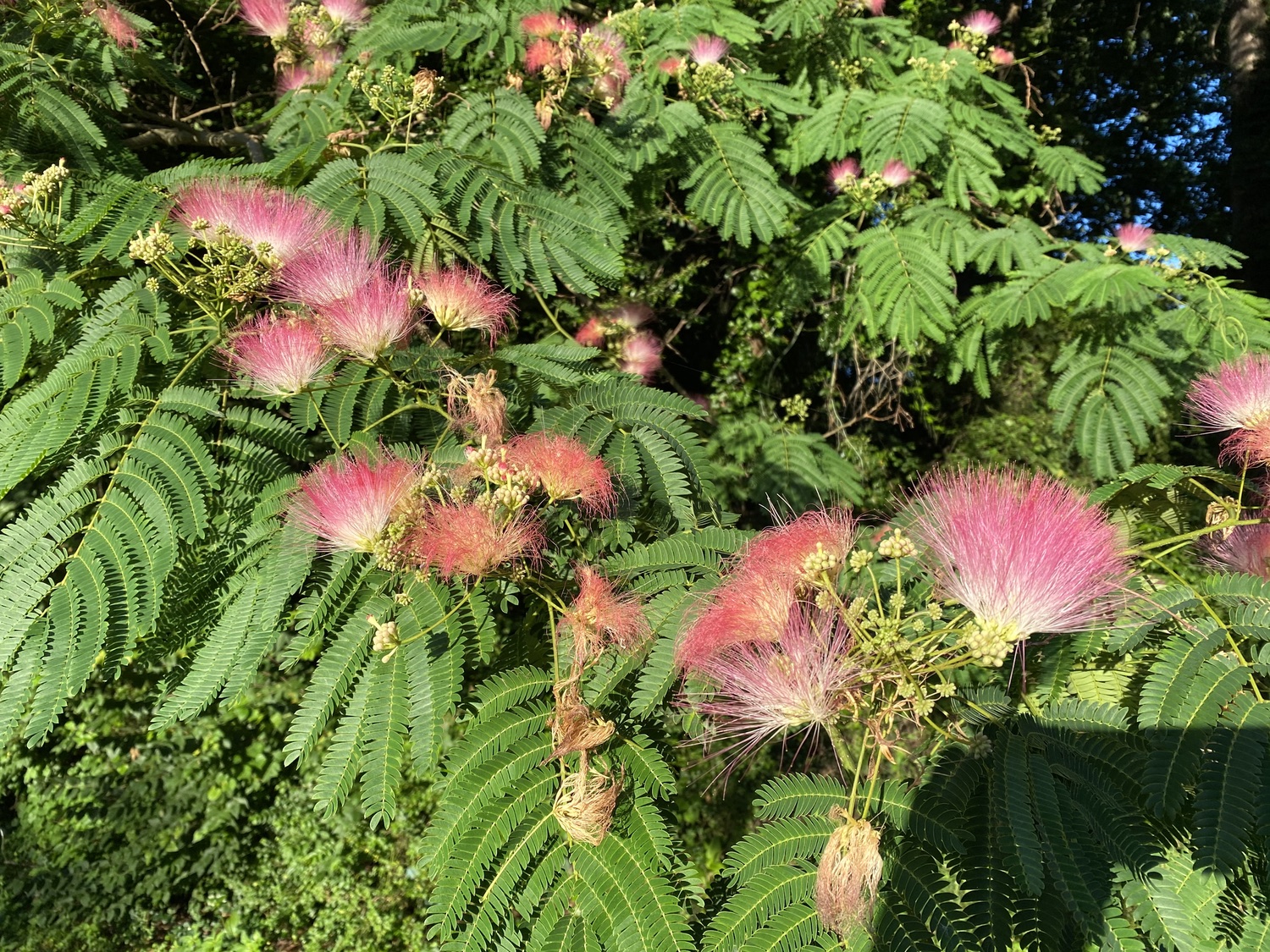
Trumpet Vine (Campsis radicans, also called Trumpet Creeper). Although often high in the canopy, the beautiful red and orange flowers of the Trumpet Vine are sometimes low enough to photographed.
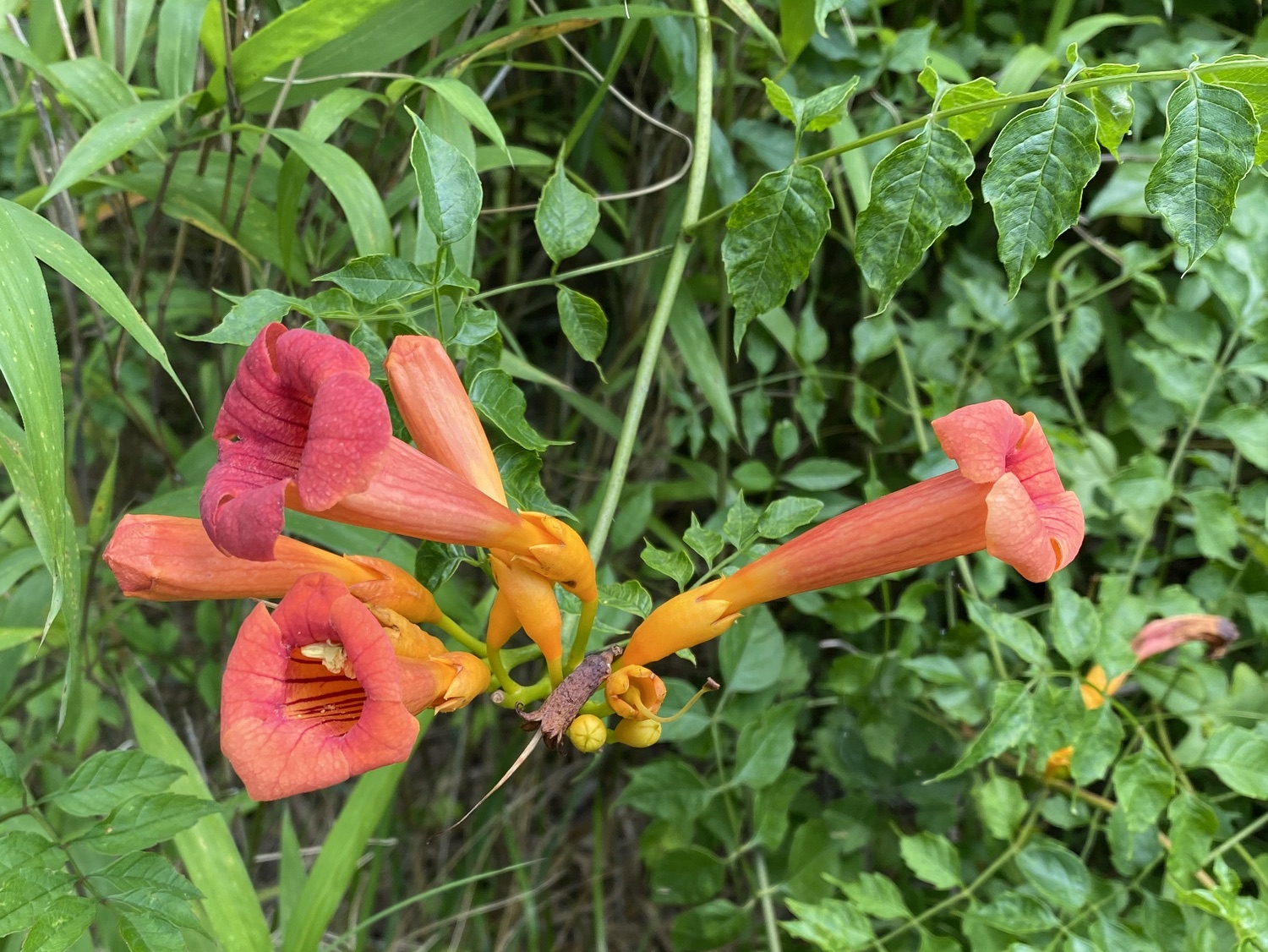
American Pokeweed (Phytolacca americana). The Pokeweed plants, having been growing for so long, are now sending out blooms from the top of these tall plants.
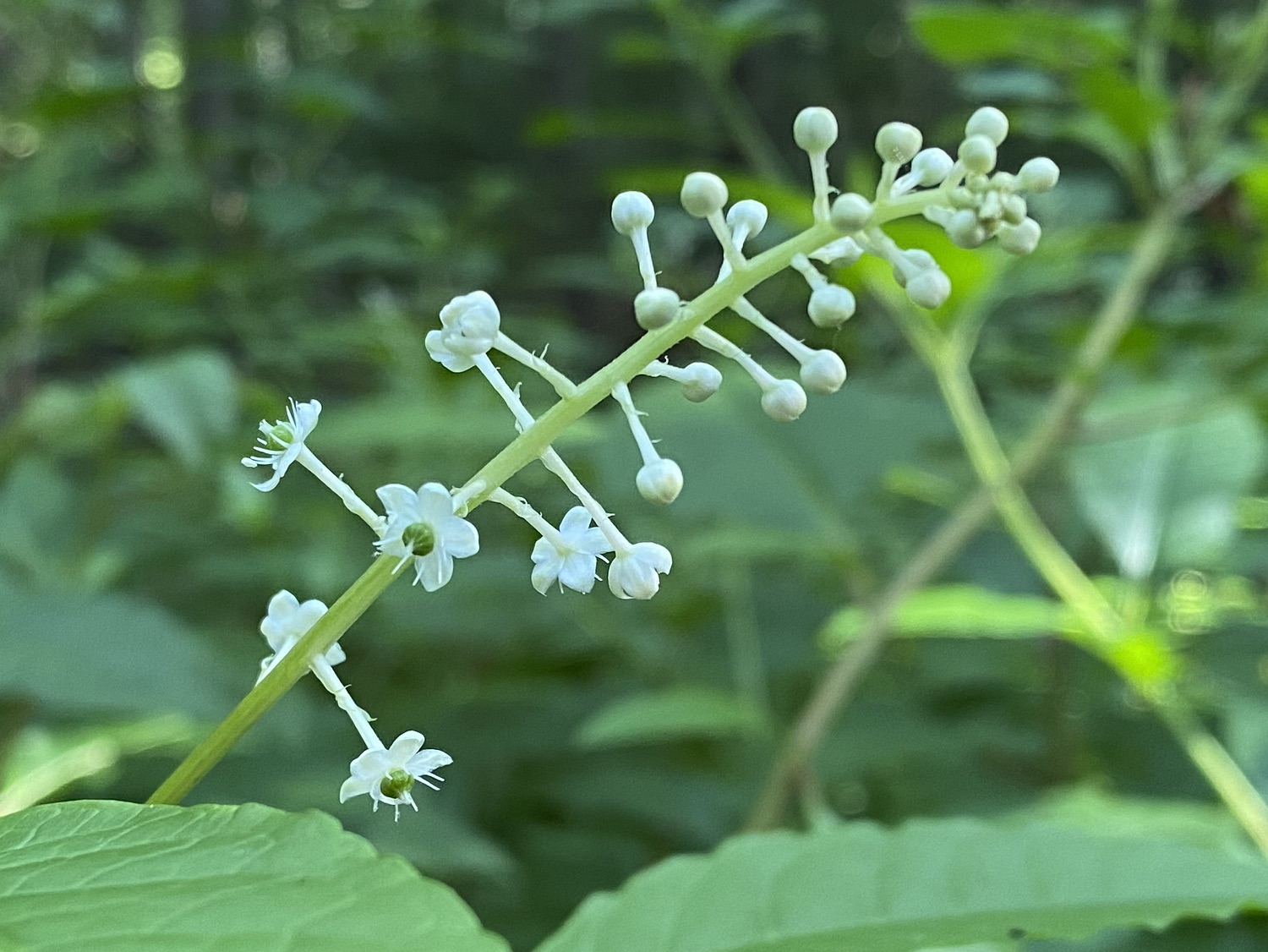
Carolina Wild Petunia (Ruellia caroliniensis). These are popping up along our street, and along the powerline cut in the Botanical Gardens. The flower is trumpet shaped, with five spreading petals.

Brazilian Vervain (Verbena brasiliensis). The flowers of Brazilian Vervain are so small that they could easily go unnoticed. The plants are up to 8' tall, with grooved stems and few leaves, making for an open-looking plant. The leaves are opposite, simple, and elongate. Brazilian Vervain is often often found in open weedy areas, such as roadsides.
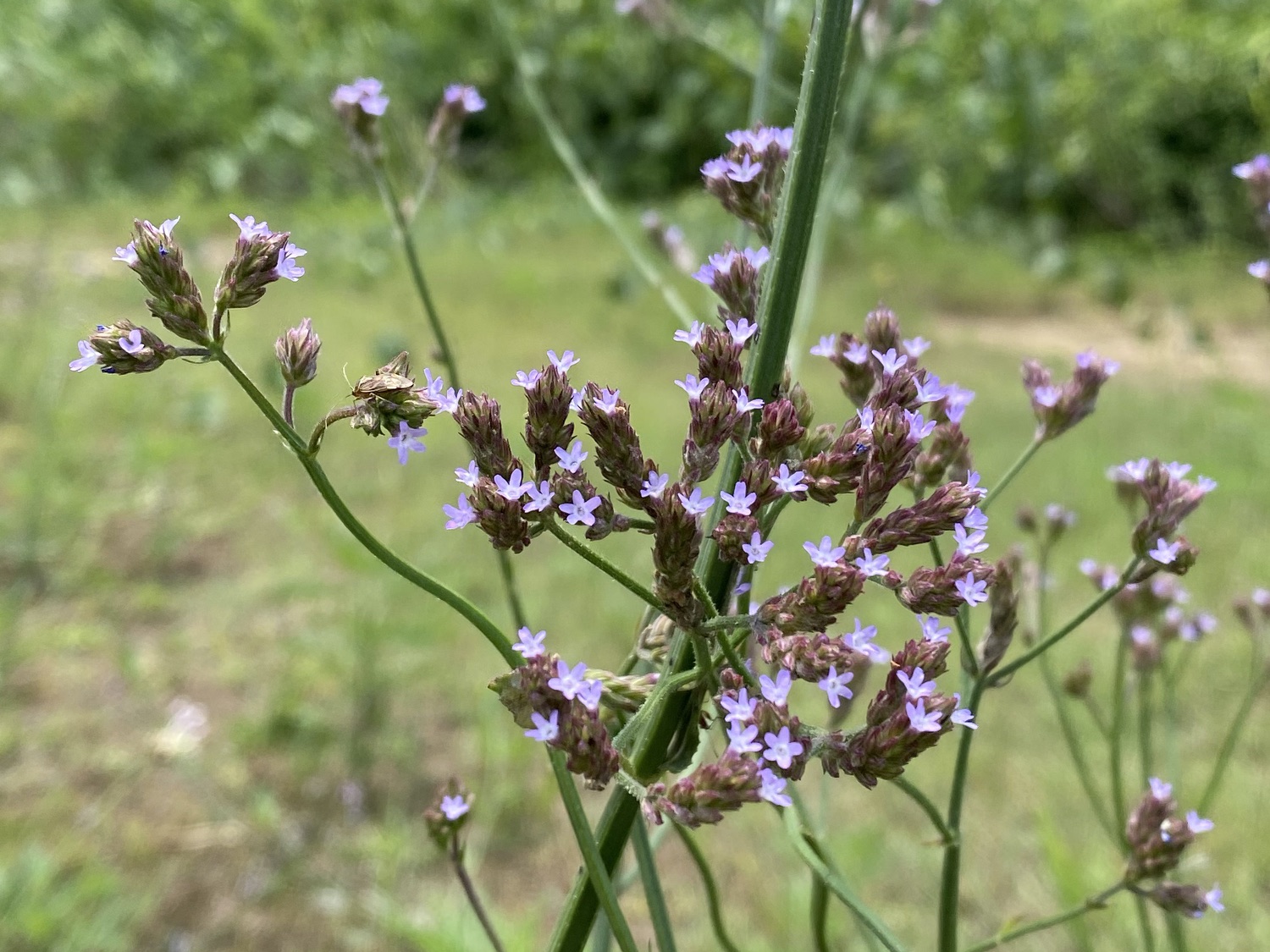
Bitterweed (Helenium amarum). Bitterweed has composite flowers, with each ray flower consisting of three main lobes, and the central disk forms a hemisphere of tiny yellow flowers. The bracts under the flower are long and tapering. The stem has numerous grass-like leaves. Clusters of small leaves are often present where the larger leaves branch from the stem. The stems can be green or red. It gets its name because if cows graze too much on this, their milk tastes bitter.

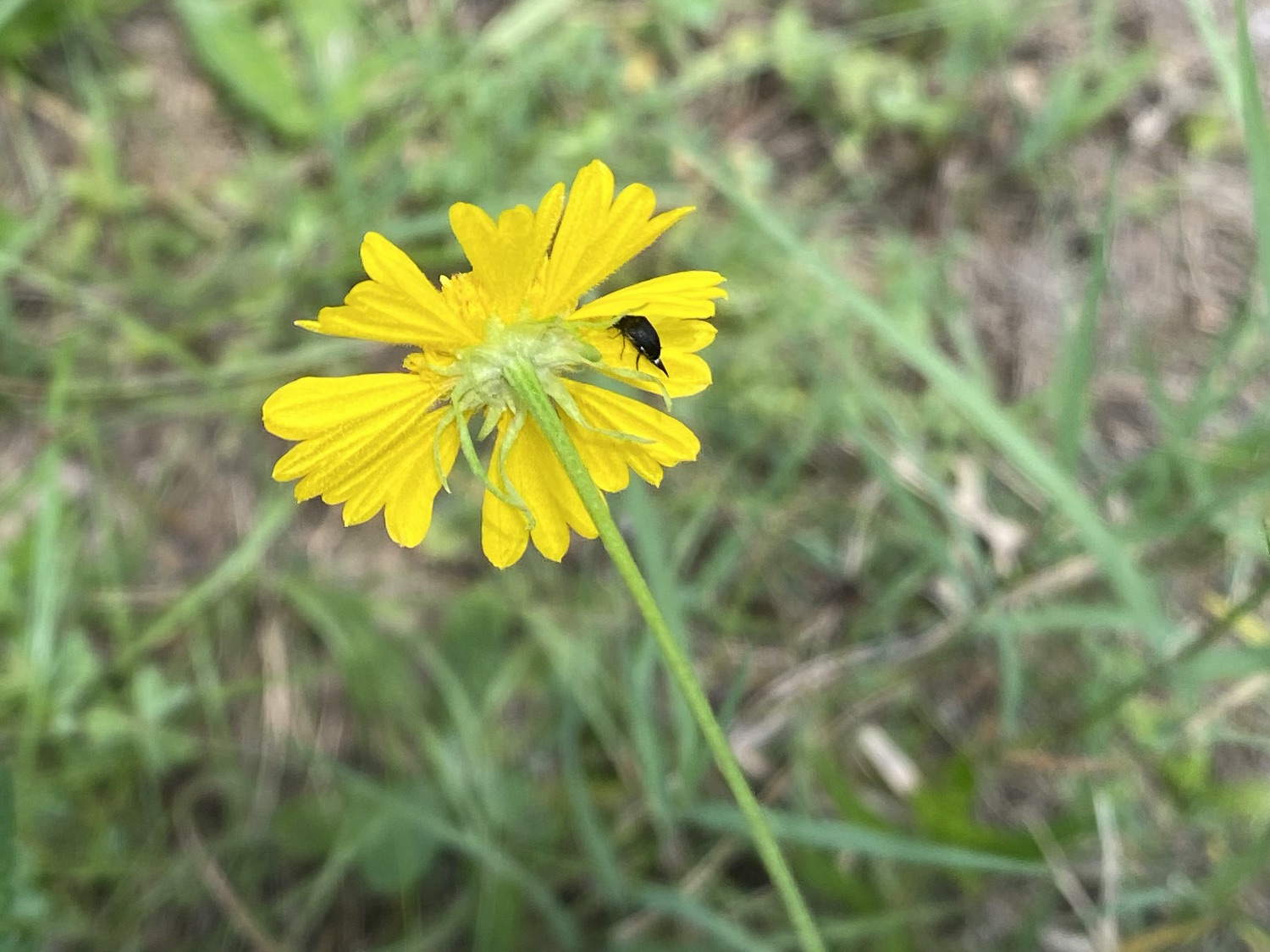
Lizards Tail (Saururus cernuus). Thick stands of these are blooming in the floodplain in the Botanical Gardens, made possible because they spread from their roots. Lizards Tail gets its name from the drooping strings of white flowers, with the blooms starting from the bottom and working up the tail. The leaves are heart-shaped and elongate. Lizards Tail was used by Native Americans as a poultice to treat inflammation and soothe body aches.
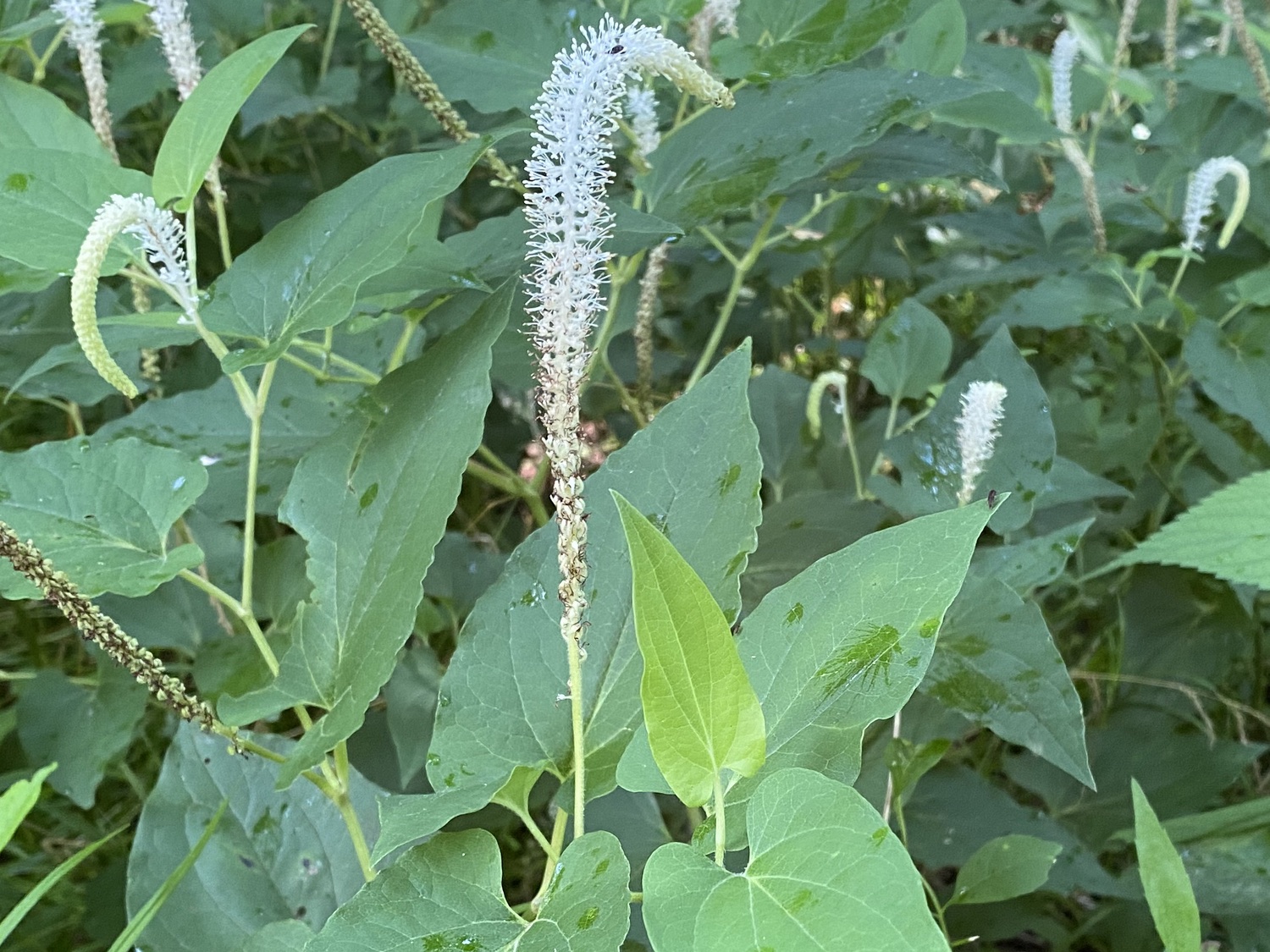
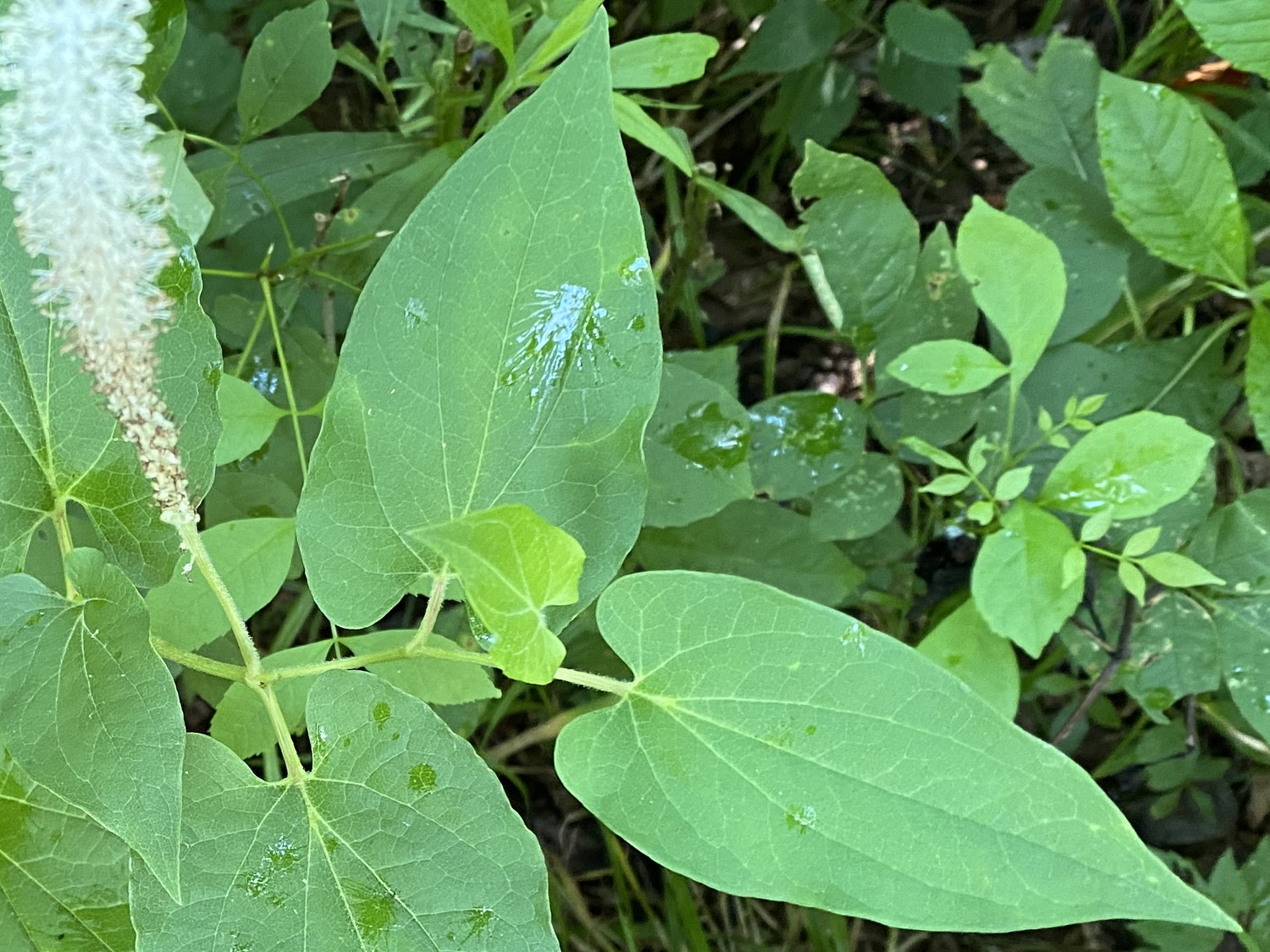
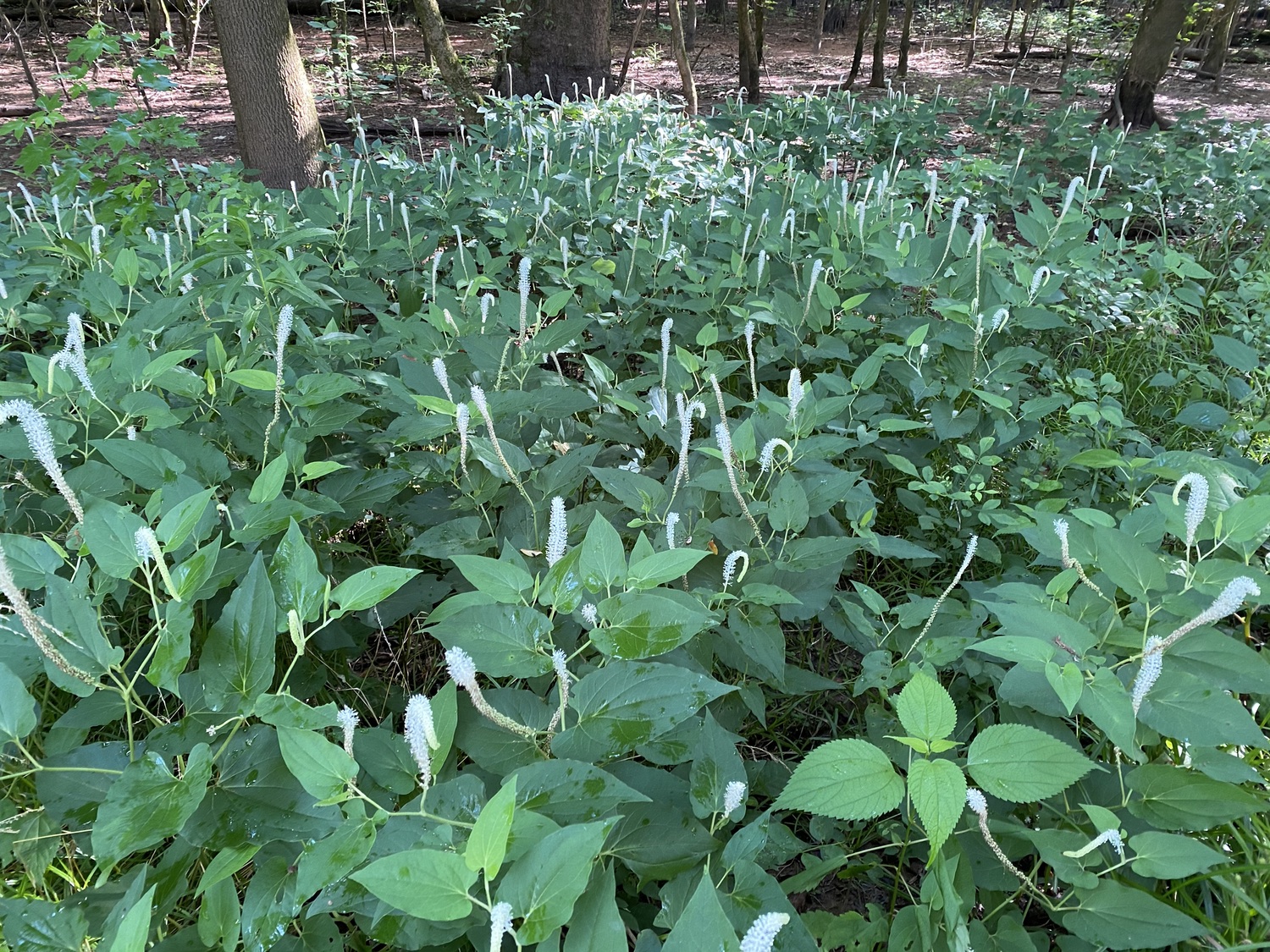
Naked-Flowered Tick Trefoil (Desmodium nudiflorum). These just started flowering along dark wooded creeks in the Botanical Gardens. The leaves and the flowers are on different stems, making it not so obvious that the leaves on the ground go with the flowers on a different stem. The leaves have the typical 3-leaflet pattern of peas.
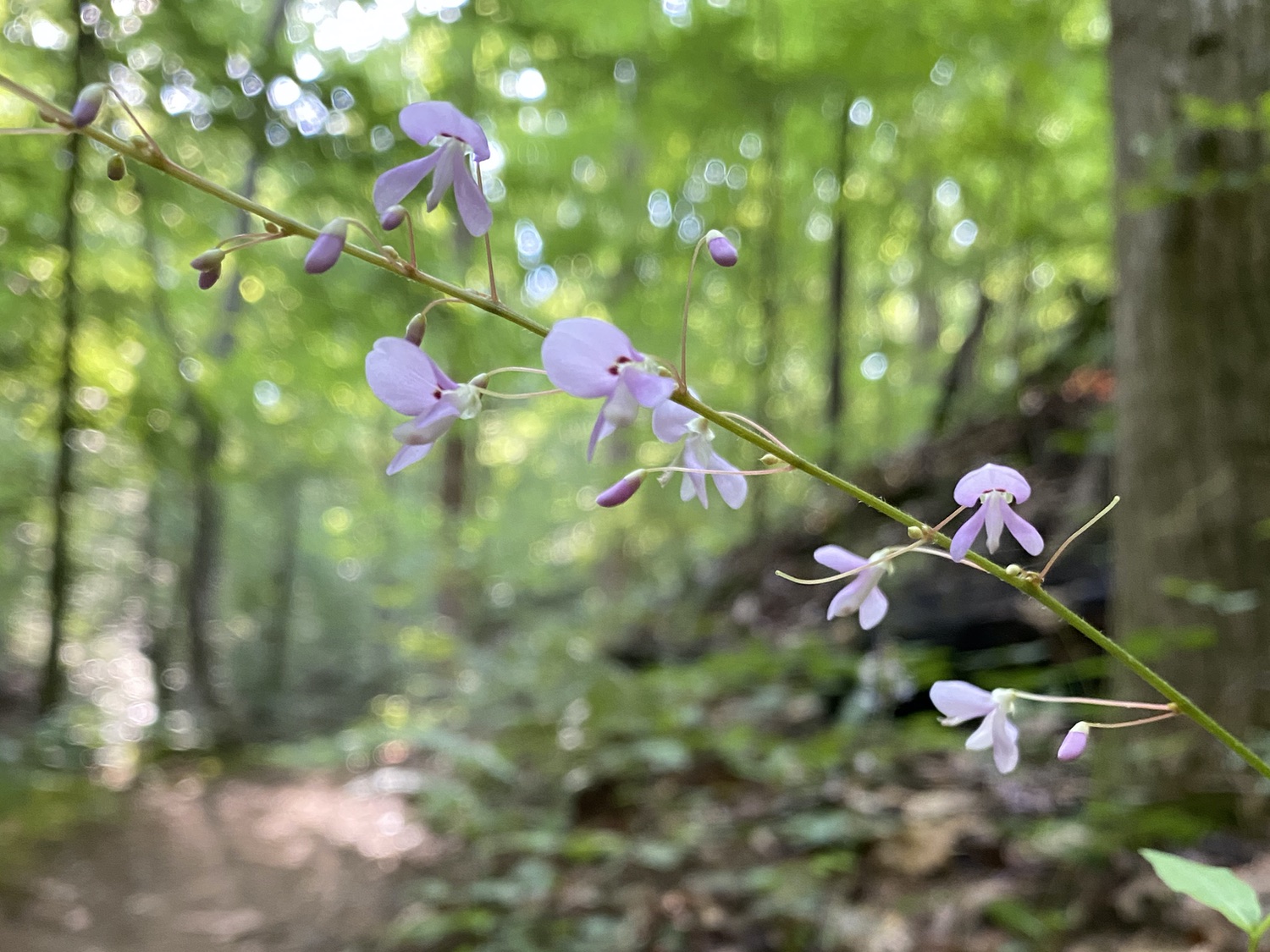
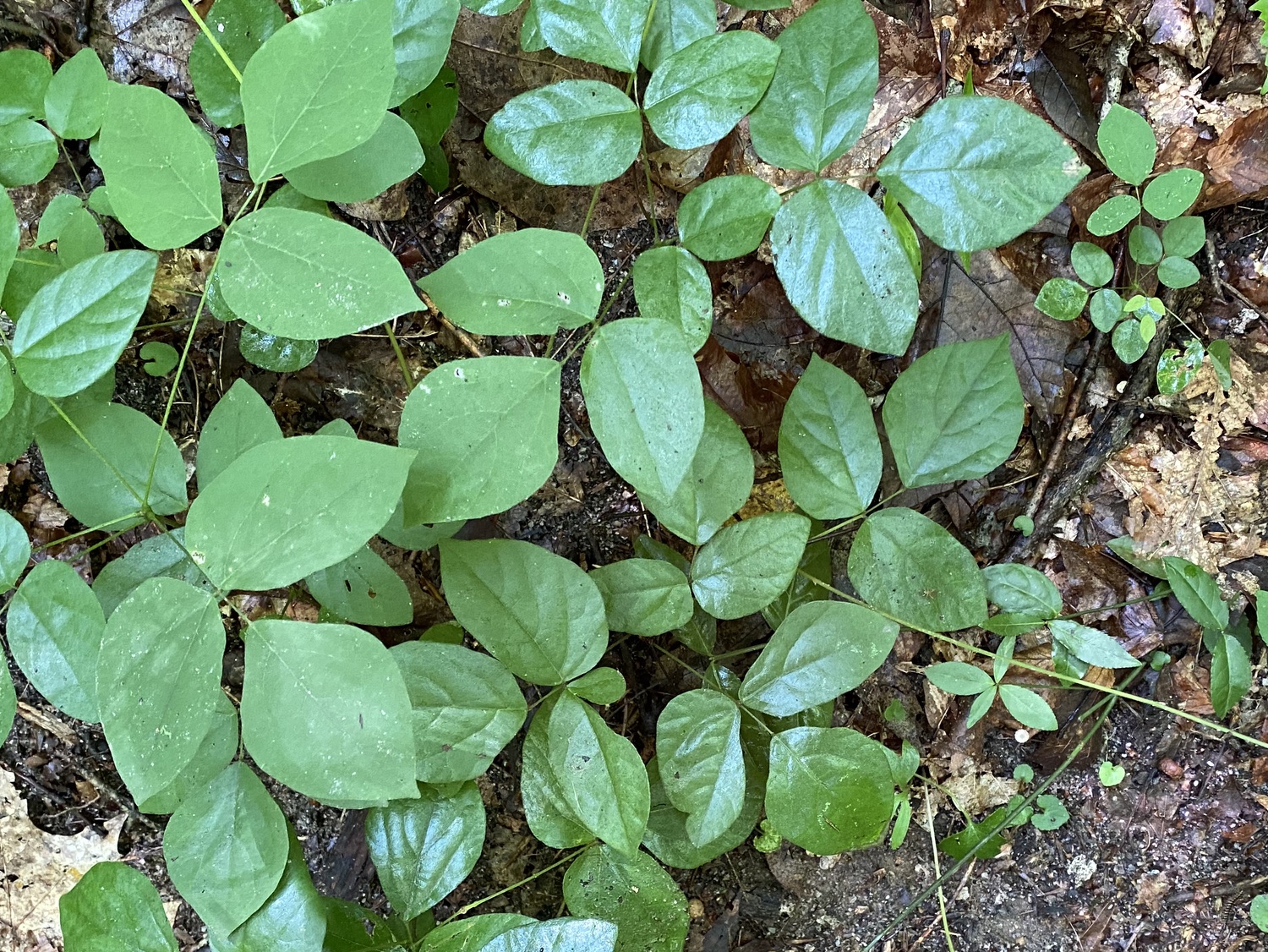
Rabbit-Foot Clover (Trifolium arevense). These have been blooming along our street.
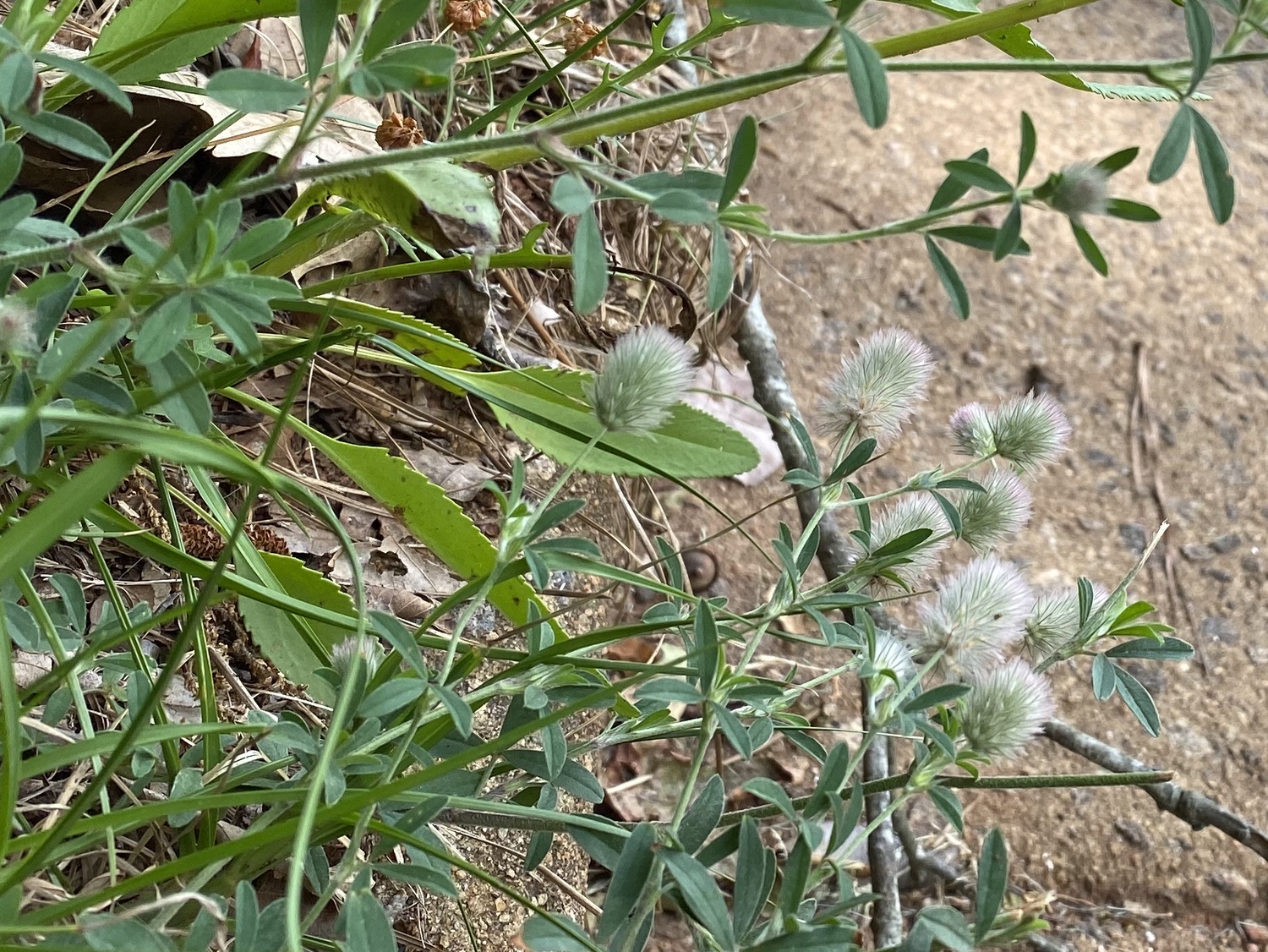
Buckhorn Plantain (Plantago lanceolata; also called by many other names including Ribwort Plantain, Narrowleaf Plantain, and English Plantain). Although maybe not the prettiest of flowers, the Buckhorn Plantain brings back great memories. My brother and I used to wrap the stem in a loop, and by carefully pulling back on it, we could shoot the flower heads at each other.

American Hog Peanut (Amphicarpaea bracteata). Although these won’t be blooming until August or September, thick patches of this are growing in moist woods near streams in the Botanical Gardens.
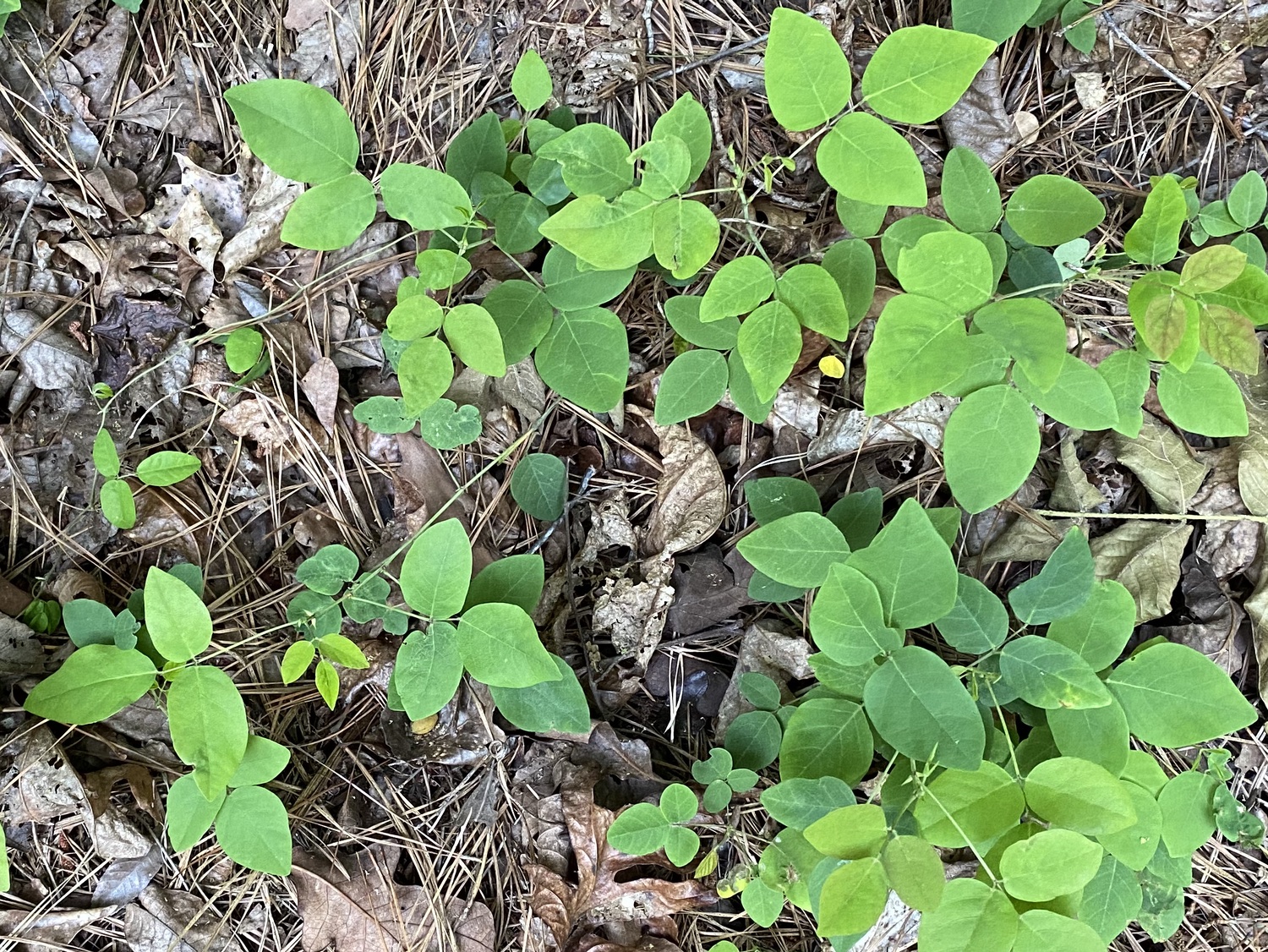
References
Chafin, L.G. 2016. Field Guide to the Wildflowers of Georgia and Surrounding States. The University of Georgia Press, Athens, Georgia.
Duncan, W.H., and M.B. Duncan. 1999. Wildflowers of the Eastern United States. The University of Georgia Press, Athens, Georgia.